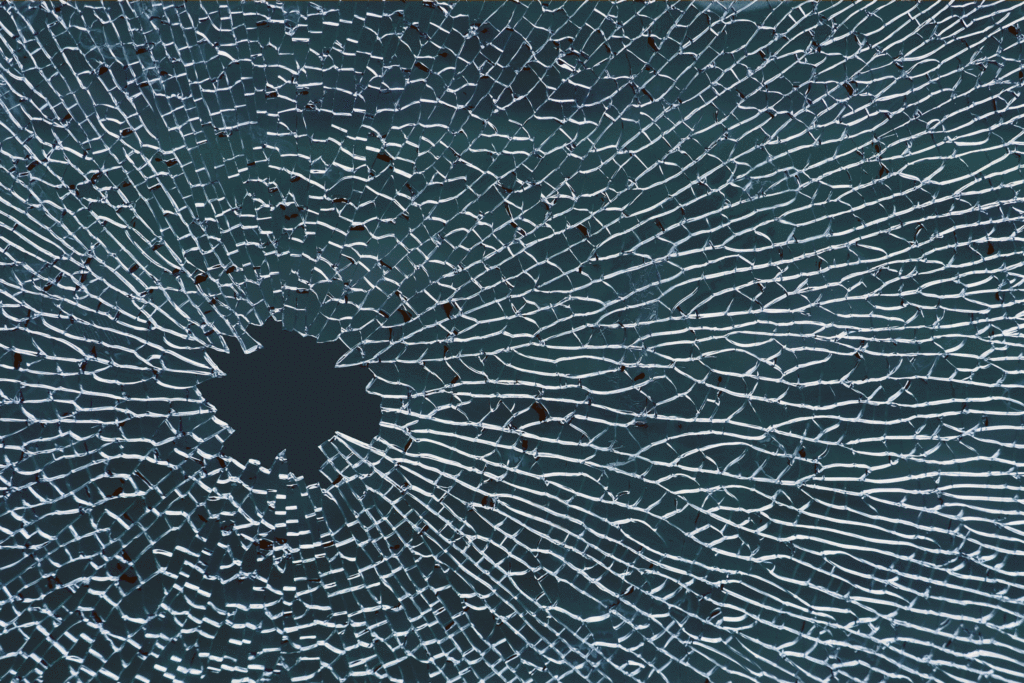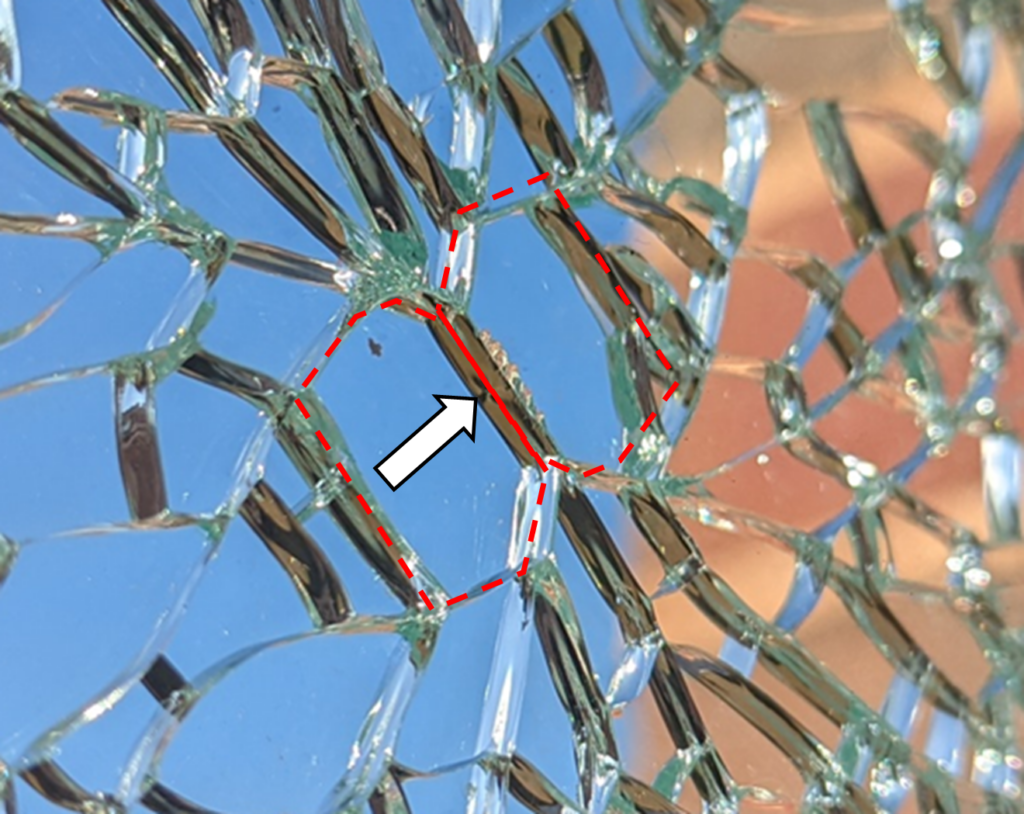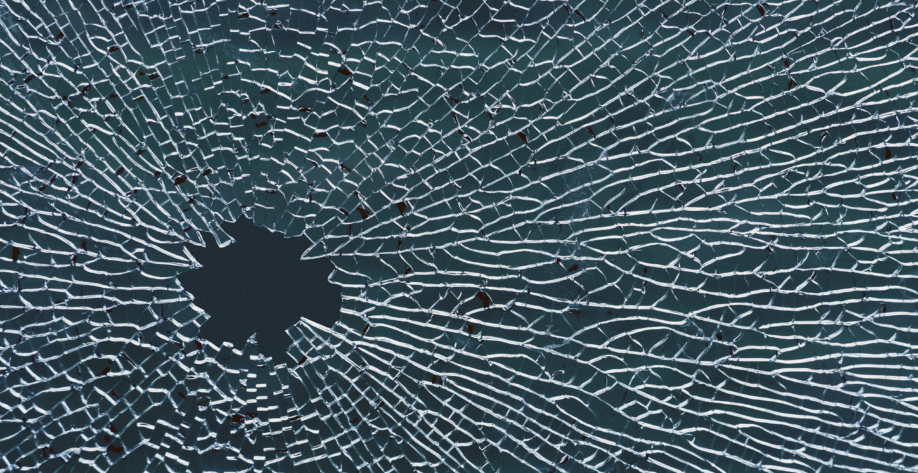Have you ever experienced glass breakage in your commercial building’s curtain wall, storefront, window, or other glazed system that was not a result of a physical impact? Do you wonder why the glass broke” and what you may be able to do to prevent future breakage? These questions are often answered with a “yes,” but met with some uncertainty on possible causes and resolutions. With some sharp sleuthing, that uncertainty can be alleviated.
The types of glazing used in modern and aged construction types can vary tremendously along with the configuration of the framing systems they are installed in. With so many variances, it is beneficial to understand the common types of failure mechanisms and ways to avoid and/or correct them in existing or future glass installations. Understanding the types of installed glass is also important and may necessitate non-destructive glass analysis by use of a handheld spectroscope device.
Impact damage to tempered glazing typically includes a defined point of impact with a circle of crushed glass or missing “cubes” that match the approximate diameter of the object that contacted the glass [Figure 1]. The glass will then exhibit a radial fracture pattern emanating from the impact epicenter.

External, or edge induced, glazing stress in laminated safety glass may result from improper securement or binding of glass within the frame, inadequate glass clearance to frame or fastener components, or other undue pressure exerted onto the glass. Unlike impact damage, edge-induced stress damage typically results in a fracture pattern that radiates out from one (or more) of the edges with no discernable impact point [Figure 2].

In some instances, a foreign particle or impurity may be trapped in tempered glass during manufacturing. These particles are called “inclusions” and are allowed per ASTM quality standards to occur in the glass up
to a certain frequency and maximum size. Like impact fractures, an inclusion fracture will appear at the crack epicenter and present as two opposing polygonal cubes. They are often termed “butterfly” fractures due to their symmetric shape about the inclusion point [Figure 3]. The inclusion can sometimes be seen with the naked eye or with assistance of an eye loop.

Insulated glazing units (IGU) can also incur damage from thermally-induced stresses caused by direct solar radiation. Changes in air pressure due to IGU gas expansion, including large temperature differences due to shading or other unequal in-plane heating and temperature differences between the center and edges of glass, can result in variable expansion rates and broken glass. Installation of tinted window films must be carefully implemented by considering glass types, film characteristics, and placement as they can affect the temperature levels of glazing if improperly implemented [Figure 4].

Industry warranty coverage will vary with each fracture type yet generally only includes extended warranty durations for the failure of insulated glazing unit (IGU) perimeter seals and excludes glass breakage. Impact fractures are not typically covered as they are caused by physical forces outside of the manufacturer’s control. Manufacturers generally will not warrant their products against inclusion damage unless the inclusion can be proven to fall outside of ASTM C1036 – Standard Specification for Flat Glass, or ASTM C1048 – Standard Specification for Heat-Strengthened and Fully Tempered Flat Glass.
Some window film manufacturers will warranty the glazing against breakage when films are selected and applied correctly.
Potential solutions for a higher-quality glazing installation may include thorough and complete delegated glazing design and shop drawing/calculation review, in-field installation quality control checks by a building enclosure designer or commissioning agent, or specifying a heat soaking process for tempered glazing as part of the manufacturing quality assurance process.
In summary, building owners and property managers should consult with their design professionals regarding expected glass performance and risk tolerance to unexpected breakage. Additional quality controls and assurance can be introduced into various stages of a project including the design, construction, and occupancy phases.
Tagged In:
Building Enclosure Design & Consulting
